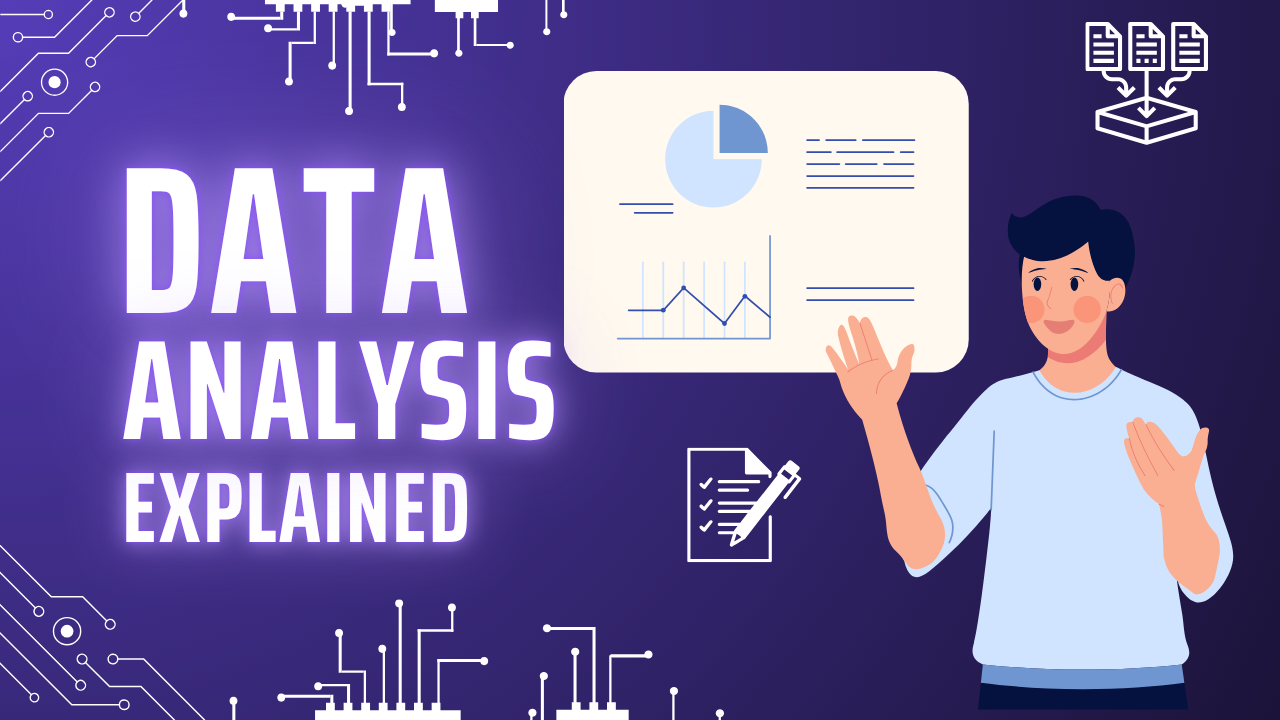
- By: admin
- Comments (0)
- Jul 28
Data is the new oil, and Data Analysts are the modern-day refiners who turn raw data into actionable business insights. As industries increasingly depend on data to drive decisions, the demand for skilled data analysts is skyrocketing across sectors like healthcare, finance, retail, marketing, and tech.
Whether you’re a fresh graduate, a working professional looking to switch, or a self-learner, this comprehensive guide will walk you through everything you need to become a data analyst—from core skills to certifications to career pathways.
Ready to start learning? Explore our Post Graduate Program in Data Analytics with job assistance, live projects, and top mentorship.
Table of Contents
Who Is a Data Analyst?
Why Become a Data Analyst in 2025?
Key Responsibilities of a Data Analyst
Essential Skills You Need
Top Tools & Technologies
Step-by-Step Roadmap to Become a Data Analyst
Best Certifications to Boost Your Career
Career Paths After Becoming a Data Analyst
FAQs
Start Your Data Analytics Journey with BookMyLearning
Who Is a Data Analyst?
A Data Analyst is a professional who collects, cleans, analyzes, and interprets data to help businesses make informed decisions. They bridge the gap between data and business goals using statistical tools and visual storytelling.
For example:
A data analyst in e-commerce might analyze customer buying behavior.
In healthcare, they may identify treatment trends or optimize hospital resource usage.
Why Become a Data Analyst in 2025?
✅ High Demand: According to LinkedIn, “Data Analyst” is one of the top 10 most in-demand jobs globally.
✅ Lucrative Salaries: In India, entry-level data analysts earn ₹4–6 LPA; mid-levels earn ₹10–15 LPA+.
✅ Low Barrier to Entry: You don’t need a PhD. Anyone with the right skills can become a data analyst.
✅ Work Flexibility: Remote roles, freelance gigs, and global work opportunities are booming.
✅ Diverse Industries: From sports to space, data is everywhere.
Key Responsibilities of a Data Analyst
While specific tasks may vary by domain, typical responsibilities include:
Collecting and organizing large data sets
Cleaning and preprocessing raw data
Performing exploratory data analysis (EDA)
Using statistical methods to detect patterns
Creating dashboards and data visualizations
Communicating insights to stakeholders
Automating reports and data pipelines
️ Essential Skills You Need
Here’s a breakdown of technical and soft skills every data analyst should master:
Technical Skills
Excel
Pivot Tables, VLOOKUP, advanced formulas, and basic automation
SQL (Structured Query Language)
Writing queries to fetch, join, filter, and manipulate data from databases
Python / R
Python (preferred for beginners): Pandas, NumPy, Matplotlib, Seaborn
R: Great for statistical modeling (less used in startups)
Data Visualization Tools
Power BI, Tableau, or Google Data Studio
Know when to use bar charts, heatmaps, or scatterplots
Statistics & Probability
Mean, median, mode, standard deviation
Hypothesis testing, p-values, A/B testing
Data Cleaning
Handling missing values, removing duplicates, formatting strings/dates
Basic Machine Learning (optional)
Linear regression, clustering, decision trees for analytics-oriented ML tasks
Soft Skills
Critical Thinking: Interpreting data correctly without bias
Communication: Explaining numbers to non-technical stakeholders
Problem-Solving: Asking the right questions from messy data
Business Acumen: Aligning analytics with company goals
Attention to Detail: A single mistake in a formula can mislead decision-makers
Step-by-Step Roadmap to Become a Data Analyst
Here’s a 7-step plan to go from zero to job-ready:
✅ Step 1: Understand the Role
Start by understanding what a data analyst actually does. Follow real professionals on LinkedIn, read blogs, or watch YouTube videos.
✅ Step 2: Learn the Basics of Excel & SQL
These are your bread and butter.
Tip: Focus on JOINs, GROUP BY, HAVING, CASE WHEN, and subqueries in SQL.
✅ Step 3: Learn Python for Data Analysis
Start with the basics—variables, loops, and functions. Then move to:
NumPy (arrays, operations)
Pandas (DataFrames, groupby, filtering)
Matplotlib & Seaborn (visualization)
Jupyter Notebooks (experimentation)
✅ Step 4: Understand Statistics & Probability
This forms the logic behind your conclusions. Focus on:
Descriptive statistics (mean, median, mode)
Inferential stats (confidence intervals, z-tests, t-tests)
A/B Testing, Normal Distribution, Central Limit Theorem
✅ Step 5: Learn Data Visualization
Pick any one tool: Tableau, Power BI, or Google Data Studio.
Understand design best practices like using color, contrast, and clean layouts.
✅ Step 6: Build Projects
Employers want proof. Work on real datasets (Kaggle, Google Datasets, UCI).
Project ideas:
Sales dashboard for a retail store
COVID-19 trend analysis
Customer segmentation for a telecom company
✅ Step 7: Create a Portfolio & Resume
Host your projects on GitHub and present them through a portfolio website. Optimize your LinkedIn and resume with keywords like “data cleaning,” “SQL queries,” “Power BI dashboard,” etc.
Best Certifications to Boost Your Career
While not mandatory, certifications improve credibility and confidence.
1. BookMyLearning’s PG Program in Data Analytics
Includes: SQL, Python, Power BI, Statistics, EDA, Capstone Projects
Duration: 6 months
Outcome: Job Assistance + Portfolio + Internship
2. Google Data Analytics Professional Certificate
Beginner-friendly with practical focus
Covers spreadsheets, SQL, R, and visualization basics
3. Microsoft Certified: Data Analyst Associate
Tool-based (Power BI), ideal if you want a corporate tech role
4. IBM Data Analyst
Includes Excel, SQL, Python, and data visualization
Career Paths After Becoming a Data Analyst
You can progress into specialized and high-paying roles, such as:
Senior Data Analyst
Business Intelligence (BI) Analyst
Data Scientist (with additional ML skills)
Product Analyst
Marketing Analyst
Data Analytics Consultant
Analytics Manager
With growing experience, you can shift into leadership roles or transition into data science, AI, or data engineering based on your interests.
❓ FAQs
Q1: Do I need to learn coding to become a data analyst?
✅ Basic coding in Python or R is strongly recommended. But you can start with Excel + SQL + Power BI.
Q2: Is a degree mandatory?
❌ Not at all. Skills, projects, and portfolios matter more today. A structured program like BookMyLearning’s can guide you from scratch.
Q3: How long does it take to become a data analyst?
⏳ With focused learning, you can become job-ready in 4–6 months.
Q4: Can I get a remote job as a data analyst?
Yes! Many startups and global companies hire remote analysts, especially post-COVID.
Start Your Data Analytics Journey with BookMyLearning
If you’re serious about building a career in data, you need the right structure, right mentorship, and job-ready projects.
The BookMyLearning Post Graduate Program in Data Analytics offers:
✅ Industry-relevant curriculum
✅ SQL, Python, Power BI, Excel, Stats
✅ Hands-on projects
✅ Capstone + Internship
✅ 1-on-1 mentorship & career support
✅ Certification & job guarantee
Whether you’re switching careers or leveling up, this is your launchpad.
Enroll Now and become a Data Analyst in 2025!
Final Words
Data analytics is one of the most rewarding, flexible, and in-demand careers in the world right now. If you’re analytical, curious, and love solving problems, this path is perfect for you.
By learning the right tools, applying them in real-world projects, and getting certified, you can land a high-paying data analyst role—even without a tech background.
Take the first step today with the right guidance from BookMyLearning and future-proof your career.



